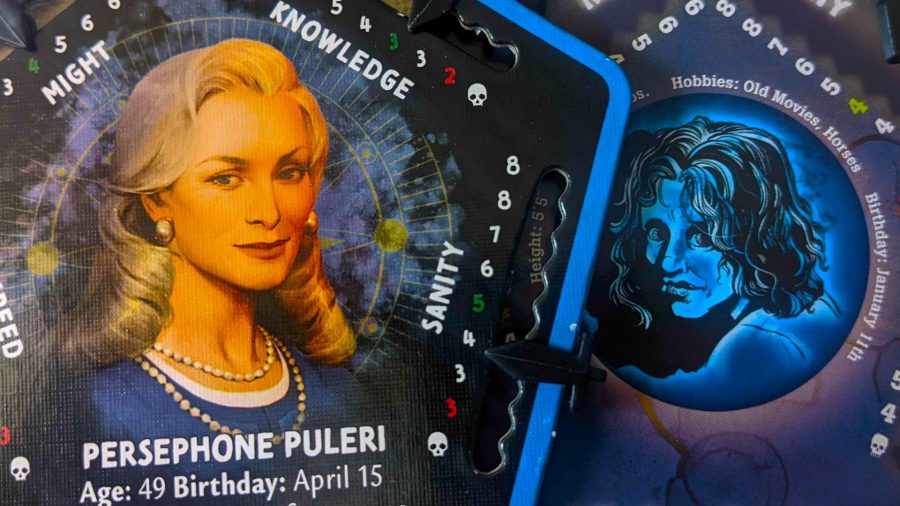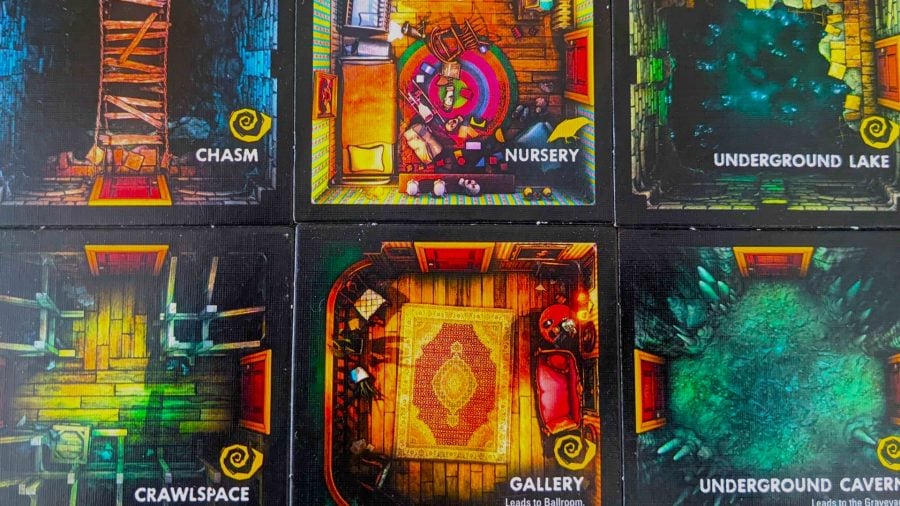What would it take for you to spend a night in a haunted house? A missing friend? A mysterious invitation? A really pushy realtor? These are all potential setups for Betrayal at House on the Hill 3rd edition, a shiny new version of the world’s best Scooby-Doo simulator.
Betrayal at House on the Hill 3rd edition starts out as a co-op exploration game. Three to six players will open doors in a haunted house by laying tiles from a shuffled stack, and they’ll encounter events, items, and omens along the way (expect spooky, scary, and skeletons). Omens eventually trigger a haunt. Here you’ll need to take on monsters, curses, or even each other if you want to survive the night.
Let me preface by saying I’m a fan of Betrayal’s 2nd edition. It had many imbalances, but the creative scenarios and perfectly executed theme meant I could often overlook its flaws. Betrayal at House on the Hill 3rd edition is still not a perfect game, but it’s improved on many of the last version’s biggest issues. It remains a loveable, randomised horror romp – but one now made more approachable, slightly more balanced, and much prettier.
Any fan of Betrayal 2nd edition will know the real villains of the game were the plastic sliders on your character boards. They were meant to keep track of the four attributes that make up your skills and health – meant to, but they often slid off to do their own thing. Betrayal 3rd edition has revamped the character boards entirely, including plastic sliders that won’t be shifting around anytime soon.
We love fun: Who doesn’t love fun board games?
The rest of the game has some equally rewarding artistic changes, too. The character minis are larger, more sturdy, and lack the clumsy paint job of their predecessors. Character boards have had a makeover, and the horde of cardboard components all have unique designs that make searching for them during gameplay far easier. The house itself is much more colourful – though the text printed on certain room tiles isn’t always as clear as it could be.

Betrayal 3rd edition continues to nail its theme-driven gameplay, even with changes. The first gameplay change you’ll encounter is five scenario cards. These give your party a reason to enter the haunted house at all, and they also determine which haunts you’re likely to encounter.
This has several benefits. Thematically, it gives some continuity to the haunt narrative you’ll encounter (and encourages a little roleplaying, if your group is enthusiastic enough). Mechanically, it helps you explore different haunts more easily or dodge ones you’re keen to avoid playing again. It brings more balance to a game that was often dragged down by its most random elements.
Imposter syndrome: Social deduction games like Among Us
Speaking of balance, the haunt roll as we know it from Betrayal 2nd edition has changed. You now roll one dice per omen you’ve picked up and trigger a haunt by rolling 5+. This makes it impossible to trigger a haunt in the first few turns, meaning everyone gets a chance to properly explore. Plenty of haunts in 2nd edition were ruined by triggering in a largely unexplored house, so this is a welcome change.
There are plenty of other, smaller rule tweaks too (with a few lifted from Betrayal Legacy). One rule in particular is a big game-changer – the reluctant traitor. This means if the chosen traitor doesn’t feel confident in their role, another player can volunteer to take their place. For new tabletop gamers, suddenly being unable to ask more experienced players for help can make the game stressful and confusing. Betrayal 3rd edition makes approachability a big priority.

One of the biggest selling points for many existing fans of the game will be the new tome of haunts available. There are some genuinely horrible and hilarious new scenarios in Betrayal 3rd edition – you’re as likely to burst out laughing as you are to feel a little queasy. Horror fans will appreciate the B-movie level of tropes and classic monster movie nods.
Add some dragons: These are the best DnD board games
But just like every horror movie franchise, Betrayal’s haunt tome suffers a few stinkers. A few of the scenarios available are incredibly bland, and they feel a like filler added to reach the target number of 50 new haunts. Spoilers, but one scenario simply says “kill each other” without much reason – and another tasks you with dusting the house.

This was an issue in Betrayal’s 2nd edition too, and Betrayal 3rd edition inherits another flaw from the family tree – vague wording. There were a few instances when our table had to decipher a haunt ruling which ended with a lot of educated guesses and ‘house rules’ – not a game ender, but always disappointing the first time you play.
Betrayal 2nd edition had a somewhat cheeky section in the rulebook titled ‘what if there isn’t a rule for that?’ which instructed you to make your own rulings when encountering grey areas. The 3rd edition rulebook hasn’t been so bold, but it also hasn’t removed all the grey areas, either.
One game to rule them all: The best Lord of the Rings board games
What this means is, if you weren’t a Betrayal fan before, this new edition is unlikely to change your mind on it – it’s like putting a bow tie on a zombie and thinking they’ll look good enough for prom.
If you were a fan before, however, these issues are minor enough not to ruin the overall experience. Betrayal at House on the Hill 3rd edition is a more polished version of itself, approachable enough to recommend to newcomers, and full of enough quality new content to satisfy the veteran Shaggys and Scoobys of the tabletop world.
Source: Wargamer




